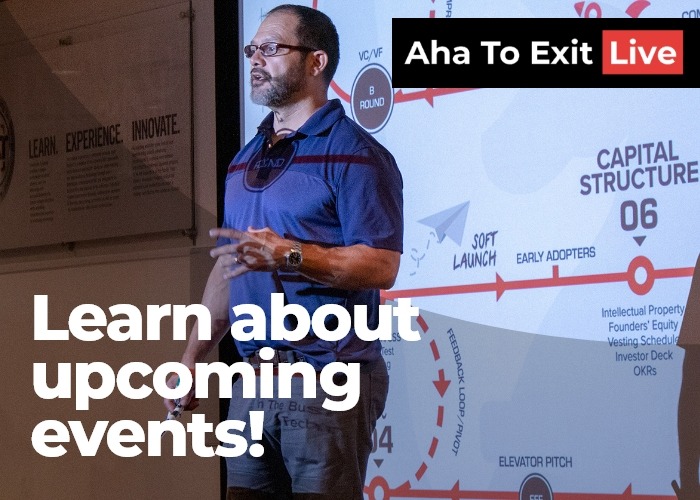Why a map?
Engineers, innovators, and entrepreneurs need values to guide them. As an innovator, entrepreneur, and financier for over 20 years, I found that I needed to move towards systematizing the practice of entrepreneurship. I was able to reflect not only my own entrepreneurial outcomes but study those who came before me. I observed their failures and successes. The further I got into documenting and analyzing this process, I found that what manifested was a map: the Aha To Exit Startup Roadmap.
Guidance is vital in startups.
Another main issue with entrepreneurship: it cannot continue its random walk. Without guidance, innovators are left to their own devices, which skyrockets the chances of failure — imagine building a beautiful house, only to find out that you didn’t even know you had to build a foundation. Without a foundation, we see poor outcomes in incubators, accelerators, and classrooms — all roads lead to increased chances of failure.
This Startup Roadmap drastically lessens the odds of this happening. Presented as a flow map, this map is perfect for students, entrepreneurs, and business, because it sequences future startup events, while also identifying its substages. Additionally, integration of all disciplines and functions of the startup become more organized, manageable and successful. Each step of the Startup Roadmap is specifically designed for entrepreneurs.
I decided to put my theory to the test by introducing an unproven map at Arizona State University (ASU) over a period of six (6) years in the Ira A. Fulton Schools of Engineering (2012 to 2018). I chose engineering as the primary lab over the business school to test whether engineers and technical experts could, in fact, execute the process successfully. The degree is a BS in Technological Entrepreneurship and Management (TEM).
The results were extraordinary:
(1) Enrollment began in 2012 with less than 50 students and exceeded 850 in 2017.
(2) Multiple disciplines began taking courses not affiliated with the degree (i.e. aeronautics, engineering, business, technology, psychology, etc.).
(3) Dozens of startups and hundreds of students began building their startups.
(4) Numerous startups have raised capital or won awards in the form of mentorship, money, sponsorships, resources, etc.
This highlights how entrepreneurs can accelerate change with the Startup Roadmap.
I found that an innovator with the Startup Roadmap will:
- Adapt quicker to a hyper-accelerated market with more prototypes.
- Better able to explore the value of their current operations.
- Reveal errors in previous iterations.
- Evaluate innovative competitiveness faster.
- Hybridize innovations.
- Determine where they are, where they’ve been and where they’re going.
Moreover, experts who follow the Startup Roadmap will not worry as much about uncertainty, primarily because the template has been homogenized to fit any venture. Imagine if each team member within the organization understood the same terms, phrases and the path of creating a successful startup. The founders would have a team full of decision makers and growth strategists!










